Before getting started¶
The following is a list of some requirements and recommendations to help prepare the 2D dataset for inversion.
Common recommendations/requirements¶
Dataset shear The inversion method assumes that the 2D dataset is sheared, such that one of the dimensions corresponds to a pure anisotropic spectrum. The anisotropic cross-sections are centered at 0 Hz. Required: Apply a shear transformation before proceeding. |
|
Calculate the noise standard deviation Use the noise region of your spectrum to calculate the standard deviation of the noise. You will require this value when implementing cross-validation. |
Spinning Sideband correlation dataset specific recommendations¶
Data-repeat operation A data-repeat operation on the time-domain signal corresponding to the sideband dimension makes the spinning sidebands look like a stick spectrum after a Fourier transformation, a visual, which most NMR spectroscopists are familiar from the 1D magic-angle spinning spectrum. Like a zero-fill operation, a spinning sideband data-repeat operation is purely cosmetic and adds no information. In terms of computation, however, a data-repeated spinning-sideband spectrum will take longer to solve. Strongly recommended: Avoid data-repeat operation. |
Magic angle flipping dataset specific recommendations¶
Isotropic shift correction along the anisotropic dimension Ordinarily, after shear, a MAF spectrum is a 2D isotropic v.s. pure anisotropic frequency correlation spectrum. In certain conditions, this is not true. In a MAF experiment, the sample holder (rotor) physically swaps between two angles (\(90^\circ \leftrightarrow 54.735^\circ\)). It is possible to have a slightly different external magnetic fields at the two angles, in which case, there is an isotropic component along the anisotropic dimension, which is not removed by the shear transformation. Required: Correct for the isotropic offset along the anisotropic dimension by adding an appropriate coordinates-offset. |
|
Zero-fill operation Zero filling the time domain dataset is purely cosmetic. It makes the spectrum look visually appealing, but adds no information, that is, a zero-filled dataset contains the same information as a non-zero filled dataset. In terms of computation, however, a zero-filled spectrum will take longer to solve. Recommendation: If zero-filled, try to keep the total number of points along the anisotropic dimension in the range of 120 - 150 points. |
